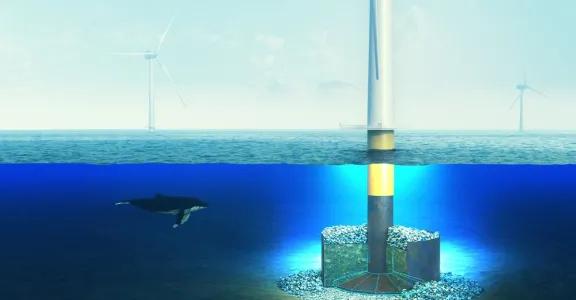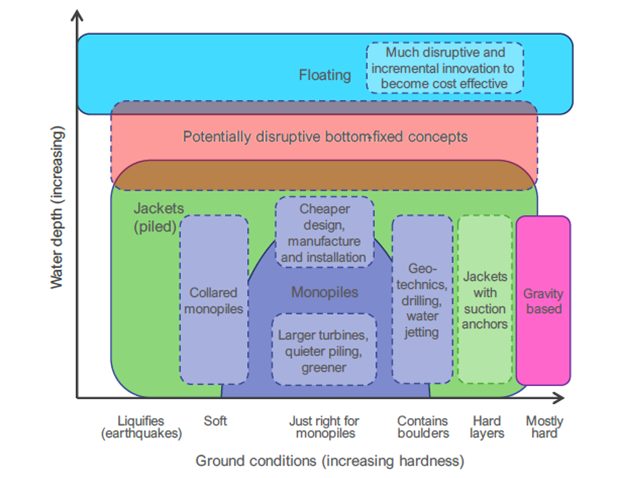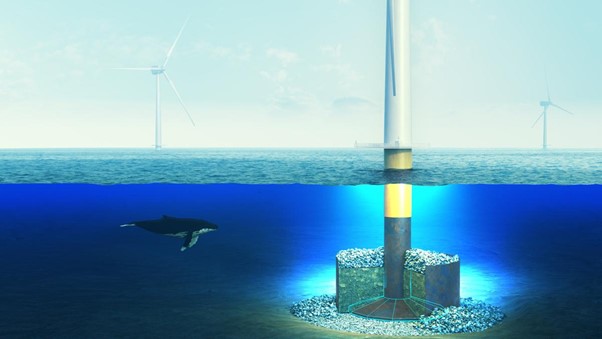How can we make wind energy at sea more feasible and profitable? That’s the challenge startup 3ST wants to solve. As offshore wind turbines grow larger and move into deeper waters, their foundation also becomes more complex. That’s why 3ST developed an innovative solution that is feasible, economical, and sustainable, while also reducing cranage and lead times. Here’s how they plan to do it.
Offshore wind turbines stand taller and deeper today than ever. As a result, traditional foundations become either less viable in certain soil conditions (e.g., monopiles) or more costly (e.g., jacket and floating foundations). What’s more, installation in difficult soil types is often hindered by the limited availability of transportation vessels, and often very noisy and thus disturbing to marine life.
The EcoGBF: anchoring our green future
To address these challenges, 3ST developed an Economical/Ecological Gravity-Based Foundation (EcoGBF). This innovative steel foundation is suitable for large offshore turbines (between 15 and 27 MW) in water depths of up to 70 meters. Its innovative, light weight, and patent-pending design offers multiple benefits, including:
- improved feasibility for large turbines (>15 MW) compared to monopiles;
- a more economical solution at 30–70-meter water depths in difficult soils compared to jacket foundations and traditional GBFs;
- reduced cranage for transportation and installation (T&I);
- a more sustainable and eco-friendlier (noise-free) approach that benefits marine life;
- a shorter lead time, since the EcoGBF’s components are serially produced and offered by multiple suppliers.
Drawing upon expertise from diverse industries, the EcoGBF also incorporates local materials (sand, gravel, or rock) for ballast, further enhancing its sustainability. The foundation can also serve as an artificial reef to preserve and even restore marine ecosystems.
Gearing up for market entry
All the above makes the EcoGBF particularly interesting in markets with difficult soil conditions. The solution has garnered significant interest from key industry players. To finalize their go-to-market strategy, 3ST partnered up with Sirris, whose team played a crucial role in establishing the proof of business, readiness for larger scale deployment, and growth.
More specifically, the collaboration consisted of:
- a comprehensive market study and competitor analysis to efficiently position 3ST in the global offshore wind market;
- guidance regarding the financial valuation of the venture and financial models for business operations;
- financial governance coaching to strengthen 3ST’s operational and strategic framework;
- a detailed go-to-market plan, including advice on early-adopter markets, further market analysis, lead identification, and evaluations of market entry strategies;
- set up of an advisory board to provide expert guidance on innovation and strategic decisions.
On the horizon
In the meantime, 3ST has engaged in multiple partnerships (with OWI-Lab, UGent and VUB) and initiated several detailed studies supporting the associated technical developments. While the EcoGBF patent is pending, the company is raising additional investments, hoping to perform the first prototype tests by 2026.
Our experts for this innovation project
Annual Report 2023: Another year of innovation!In 2023, we didn't just adapt, we innovated and elevated! From boosting innovation services to diving deep into energy transition and manufacturing, we've been busy. We completed over 1.200 innovation projects and highlighted 13 industrial cases in the annual report. And let's not forget our leap into Generative AI, which is a game-changer. |







